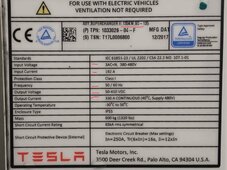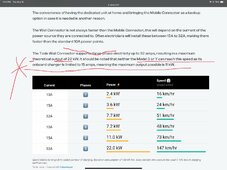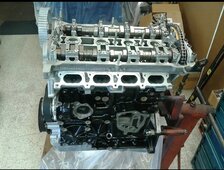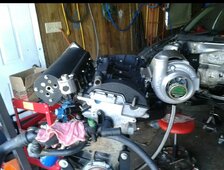You are using an out of date browser. It may not display this or other websites correctly.
You should upgrade or use an alternative browser.
You should upgrade or use an alternative browser.
Can Solar & Wind Fix Everything (e.g., Climate Change) with a battery break-through?
- Thread starter svetz
- Start date
42OhmsPA
What's in a title?
Yea, let's look at it. https://www.epa.gov/automotive-trends/highlights-automotive-trends-reportBob, something tells me cows isn't where we should focus our attention (yet).
View attachment 216102
think this is where we should be looking.
View attachment 216103

You have to look at data from multiple angles Tommy, especially in todays world. Pretty much anyone can spin data to suite a purpose.
TommySr
Solar Enthusiast
42OhmsPA, that is progress, weather it's enough with the volume or cars on the road, we are goingYou have to look at data from multiple angles Tommy, especially in todays world. Pretty much anyone can spin data to suite a purpose.
to find out (the g/mi for ev's is 0, with all the ICE cars on the road it's 96452 tons/mi )
for semi-trailer truck it's 1617 g/mi
keep in mind there are over 14 million cars on the road older the 25yrs.
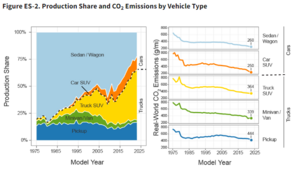
Last edited:
Daddy Tanuki
Solar Wizard
Those two graphs Look identical except ones flipped upside downYea, let's look at it. https://www.epa.gov/automotive-trends/highlights-automotive-trends-report
View attachment 216104
You have to look at data from multiple angles Tommy, especially in today’s world. Pretty much anyone can spin data to suite a purpose.
42OhmsPA
What's in a title?
It will only be 0 for EVs if they are charged from 100% renewable and the infrastructure was made from 100% renewable...42OhmsPA, that is progress, weather it's enough with the volume or cars on the road, we are going
to find out (the g/mi for ev's is 0, with all the ICE cars on the road it's 96452 tons/mi )

At the rate I'm going my 337 will be 25 years old by the time I get it back on the road, can't wait to burn some rubber in a 3rd gear pull again; open waste gate, pcv system deleted, of course it's allergic to cats...for semi-trailer truck it's 1617 g/mi
keep in mind there are over 14 million cars on the road older the 25yrs.
View attachment 216106
Shouldn't they?Those two graphs Look identical except ones flipped upside down
TommySr
Solar Enthusiast
42OhmsPA, but, but...g/mi is only a moving value, not sure you could include the co2 from manufactureIt will only be 0 for EVs if they are charged from 100% renewable and the infrastructure was made from 100% renewable...
in the g/mi value either, while it may be moving on a assembly line It may not move a mile.
but to be fair, even that semi-trailer truck's g/mi is 0 when it's stopped for refueling.
got any pictures you could post?337 will be 25 years old by the time I get it back on the road
TommySr
Solar Enthusiast
42OhmsPA, there is hope for greater reductions in ICE g/mi numbers, one technological advanceYea, let's look at it. https://www.epa.gov/automotive-trends/highlights-automotive-trends-report
more the halved the g/mi for ICE engines the catalytic converter, some day svetz may post a video
on the next technological advance that make a dramatic reduction....I hope we are open minded enough
to take the time to watch it.

US Power Grid May Become Unreliable This Summer, Watchdog Warns
(Read in full - they are still pushing the crazy agenda because the real goal is energy rationing and using that to control over the people)Parts of America could face difficulties in meeting electricity demand during the summer season, with renewable energy sources like wind and solar power posing a potential risk to reliable power supply, according to a report by the North American Electric Reliability Corporation (NERC).
The NERC report classifies several parts of the country as facing an “elevated” risk of summer electricity reliability for the upcoming June-September period.
Elevated risk means there is “potential for insufficient operating reserves” when the region faces above-normal demand conditions. Such regions include parts of Louisiana, Texas, New Mexico, Arizona, California, Illinois, and Iowa. The determination of elevated risk is based on various factors, including potential low wind or solar energy condions that could lead to a lower electricity supply.
The North American power bulk power system (BPS) is made up of six regional entities—Midwest Reliability Organization (MRO), Northeast Power Coordinating Council (NPCC), ReliabilityFirst (RF), SERC Reliability Corporation (SERC), Texas Reliability Entity (Texas RE), Western Electricity Coordinating Council (WECC)—with elevated risk upcoming in certain regions.
Midcontinent Independent System Operator (MISO), which manages the electricity capacity market, operates in 15 U.S. states, including Texas, Illinois, Montana, Arkansas, and Kentucky. MISO is expected to have “sufficient resources” to meet normal summer peak demand, the NERC report said.
However, if MISO were to face above-normal peak demand conditions at a time when wind and solar output is lower than expected, it could be “challenging” for the transmission organization to meet demand.
“Wind generator performance during periods of high demand is a key factor in determining whether there is sufficient electricity supply on the system or if external (non-firm) supply assistance is required to maintain reliability.”
The Texas RE ERCOT (Electric Reliability Council of Texas) interconnection, which handles approximately 90 percent of Texas’ electrical load, faces potential emergency conditions in summer evening hours “when solar generation begins to ramp down.”
Under certain grid conditions, power transfers from South Texas to the San Antonio region have to be restricted, which contributes to “elevated risk” of supply. Such grid conditions occur when “demand is high and wind and solar output is low in specific areas, straining the transmission system.”
In areas serviced by the WECC covering 14 states, including California and New Mexico, challenges to electricity reliability are estimated to be under “above-normal demand and low-resource conditions.” Such a situation happens when there is low solar output or below-normal imports, the report said.
Commenting on the NERC report, Michelle Bloodworth, the CEO of America’s Power, a partnership of industries involved in producing electricity from coal, said the assessment reveals that the American electricity grid is “increasingly reliant on weather-dependent sources of electricity” like solar and wind power.
This puts “one-third of the country at elevated risk of blackouts this summer,” she said, adding that such risks are only poised to increase because of regulations imposed by the U.S. Environmental Protection Agency (EPA).
“Delayed coal plant retirements are playing a key role in supporting grid reliability. However, this is only a temporary band-aid because EPA regulations will cause more coal retirements that cannot be delayed. These regulations, especially the recently announced Carbon Rule, increase the chance of blackouts,” Ms. Bloodworth said.
“With electricity demand exploding, our country needs a strategy for ensuring a healthy long-term electricity supply that doesn’t depend on the sun and the wind and is not dictated by EPA regulations.”
The EPA backs renewable energy, noting it “produces no greenhouse gas emissions” like fossil fuels and reduces some types of air pollution. Renewable can also reduce America’s “dependence on imported fuels.”
Last month, the EPA announced $7 billion in grants under the “Solar for All” scheme to deliver residential solar projects to more than 900,000 homes across the United States. The grants are awarded to 60 selectees.
“The selectees will advance solar energy initiatives across the country, creating hundreds of thousands of good-paying jobs, saving $8 billion in energy costs for families, delivering cleaner air, and combating climate change,” EPA administrator Michael S. Regan said.
New EPA Rule
The NERC report comes as the EPA announced a suite of final rules on April 25 aimed at reducing pollution from fossil fuel-fired power plants.The new standards require all coal-fired plants that intend to run in the long term as well as all new baseload gas-fired plants to curb 90 percent of their carbon pollution.
The rules also tighten the coal plant emissions standard for toxic metals by 67 percent and mandate a 70 percent reduction in the emissions standard for mercury from existing lignite-fired sources. Additionally, rules regarding wastewater discharge at coal plants and the management of coal ash are strengthened.
The EPA claims the new standards deliver on the Biden administration’s commitment to protect the health of all communities. The agency said the rules will deliver “hundreds of billions of dollars in net benefits.”
“The regulatory impact analysis projects reductions of 1.38 billion metric tons of carbon pollution overall through 2047, which is equivalent to preventing the annual emissions of 328 million gasoline cars, or to nearly an entire year of emissions from the entire U.S. electric power sector. It also projects up to $370 billion in climate and public health net benefits over the next two decades,” the EPA said.
The agency also estimates that the rules will avoid up to 1,200 premature deaths, 1,900 cases of asthma onset, 360,000 instances of asthma symptoms, and 57,000 lost workdays in 2035 alone.
“By developing these standards in a clear, transparent, inclusive manner, EPA is cutting pollution while ensuring that power companies can make smart investments and continue to deliver reliable electricity for all Americans,” Mr. Regan said.
The energy regulations have been criticized by Jim Matheson, CEO of the National Rural Electric Cooperative Association, a trade association of electrical cooperatives.
“The path outlined by the EPA is unlawful, unrealistic, and unachievable,” he said. “It undermines electric reliability and poses grave consequences for an already stressed electric grid. This barrage of new EPA rules ignores our nation’s ongoing electric reliability challenges and is the wrong approach at a critical time for our nation’s energy future.”
Senator Shelley Moore Capito (R-W.Va.) called EPA rules proof that President Biden has “doubled down” on his plans to shut down the “backbone of America’s electric grid.”
“Electricity demand is set to skyrocket thanks in part to the EPA’s own electric vehicles mandate, and unfortunately, Americans are already paying higher utility bills under President Biden,” she said.
“Despite all this, the administration has chosen to press ahead with its unrealistic climate agenda that threatens access to affordable, reliable energy for households and employers across the country.”
Daddy Tanuki
Solar Wizard
Not my area of expertise but I would expect a little more deviationIt will only be 0 for EVs if they are charged from 100% renewable and the infrastructure was made from 100% renewable...
View attachment 216124
At the rate I'm going my 337 will be 25 years old by the time I get it back on the road, can't wait to burn some rubber in a 3rd gear pull again; open waste gate, pcv system deleted, of course it's allergic to cats...
Shouldn't they?
TommySr
Solar Enthusiast
IMO semi-trailer truck's g/mi should be looked at, before the catalytic converter for gas engines
there was the Thermal Reactor, it's possible that tech could reduce diesel engine's emissions.
there was the Thermal Reactor, it's possible that tech could reduce diesel engine's emissions.
Attachments
Last edited:
TommySr
Solar Enthusiast
D71, you will be missedBack to bed… sick.
svetz
Works in theory! Practice? That's something else
Concrete made from sugarcane could help fight climate change
Sugarcane concrete
Sugarcane blocks
Opinion: Pity increased CO2 levels don't do much for Sugarcane ref
Algae's surprising potential to help ease climate change worries
Sugarcane concrete
Sugarcane blocks
Opinion: Pity increased CO2 levels don't do much for Sugarcane ref
| 2nd day of National Weather Service's Heat Advisory warnings Opinion: They put the warning out when it's over 110°F. Yesterday it peaked at 116.9°F. Hopefully it won't be as hot as last year. Huh... only place in the country? Not even death valley? Well... Aren't we special? |  |
Algae's surprising potential to help ease climate change worries
Opinion: Oh no! We'll have to eat plants grown in clean water instead of dirt! ; -)This green process goes beyond climate issues. For example, it may even transform the way we produce our food,
Opinion: Hmmm, there's no mention of CO2 capture, although one of the products is biofuels.The global algae-based products market is expected to reach a value of $3.91 billion by 2025. ref
The revenue streams for an algae farm business typ8ically come from the sale of algae-based products to various industries. These products can include biofuels, fertilizers, food supplements, and high-value compounds such as omea-3 fatty acids, antioxidants, and pigments. ref
Opinion: it sounds like the market is saturated, that is there's not demand for more algae products.According to industry reports and estimates, a medium-sized algae farm business in the US can generate an average annual revenue ranging from $500,000 to $1 million. However, larger farms with advanced bioreactor systems and established market channels may have the potential to generate even higher revenues.
The Carbon Capture Con
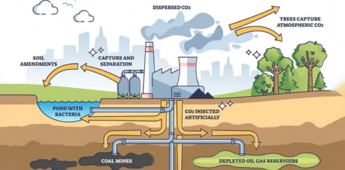
Carbon-capture-and-underground-storage “(CCUS)” tops the list of silly schemes “to reduce man-made global warming.” The idea is to capture exhaust gases from power stations or cement plants, separate the CO2 from the other gases, compress it, pump it to the chosen burial site and force it underground into permeable rock formations. Then hope it never escapes.Pumping gases underground is only sensible if it brings real benefits such as using waste gases to increase oil recovery from declining oil fields – frack the strata, pump in CO2, and force out oil/gas.”
An Australian mining company who should know better is hoping to appease green critics by proposing to bury the gas of life, CO2, deep in the sedimentary rocks of Australia’s Great Artesian Basin.
They have chosen the Precipice Sandstone for their carbon cemetery. However, the chances of keeping CO2 gas confined in this porous sandstone are remote. This formation has a very large area of outcrop to the surface and gas will escape somewhere, so why bother forcing it into a jail with no roof?
Glencore shareholders should rise in anger at this wasteful and futile pagan sacrifice to the global warming gods. It will join fiascos like Snowy 2, pink bats and SunCable (a dream to take solar energy generated in NT via overhead and undersea cable for over 5000 km across ocean deeps and volcanic belts to Singapore).
Engineers with buckets of easy money may base a whole career on Carbon Capture and Underground Storage. But only stupid green zealots would support the sacrifice of billions of investment dollars and scads of energy to bury this harmless, invisible, life-supporting gas in the hope of appeasing the high priests of global warming.
The quantities of gases that CCUS would need to handle are enormous, and the capital and operating costs will be horrendous. It is a dreadful waste of energy and resources, consuming about twenty percent of power delivered from an otherwise efficient coal-fired power station.
For every tonne of coal burnt in a power station, about 11 tonnes of gases are exhausted – 7.5 tonnes of nitrogen from the air used to burn the coal, plus 2.5 tonnes of CO2 and one tonne of water vapour from the coal combustion process.
Normally these beneficial atmospheric gases are released to the atmosphere after filters take out any nasties like soot and noxious fumes.
However, CCUS also requires energy to produce and fabricate steel and erect gas storages, pumps and pipelines and to drill disposal wells. This will chew up more coal resources and produce yet more carbon dioxide, for zero benefit.
But the real problems are at the burial site – how to create a secure space to hold the CO2 gas. There is no vacuum occurring naturally anywhere on earth – every bit of space on Earth is occupied by something – solids, liquids or gases. Underground disposal of CO2 requires it to be pumped AGAINST the pressure of whatever fills the pore space of the rock formation now – either natural gases or liquids. These pressures can be substantial, especially after more gas is pumped in.
The natural gases in sedimentary rock formations are commonly air, CO2, CH4 (methane) or rarely, H2S (rotten egg gas). The liquids are commonly salty water, sometimes fresh water or very rarely, liquid hydrocarbons.
Pumping out air is costly; pumping out natural CO2 to make room for man-made CO2 is pointless; and releasing rotten egg gas or salty water on the surface would create a real problem, unlike the imaginary threat from CO2.
In some cases, CCUS may require the removal of fresh water to make space for CO2. Producing fresh water on the surface would be seen as a boon by most locals. Pumping out salt water to make space to bury CO2 would create more problems than it could solve.
Naturally, some carbon dioxide buried under pressure will dissolve in groundwater and aerate it, so that the next water driller in the area could get a real bonus – bubbling Perrier Water on tap, worth more than oil.
Then there is the dangerous risk of a surface outburst or leakage from a pressurised underground reservoir of CO2. The atmosphere contains 0.04% CO2 which is beneficial for all life. But the gas in a CCUS reservoir would contain +90% of this heavier-than-air gas – a lethal, suffocating concentration for nearby animal life if it escaped in a gas outburst.
Pumping gases underground is only sensible if it brings real benefits such as using waste gases to increase oil recovery from declining oil fields – frack the strata, pump in CO2, and force out oil/gas. To find a place where you could drive out natural hydro-carbons in order to make space to bury CO2 would be like winning the Lottery – a profitable but unlikely event.
Normally however, CCUS will be futile as the oceans will largely undo whatever man tries to do with CO2 in the atmosphere. Oceans contain vastly more CO2 than the thin puny atmosphere, and oceans maintain equilibrium between CO2 in the atmosphere and CO2 dissolved in the oceans. If man releases CO2 into the atmosphere, the oceans will quickly absorb much of it. And if by some fluke man reduced the CO2 in the atmosphere, CO2 would bubble out of the oceans to replace much of it. Or just one decent volcanic explosion could negate the whole CCUS exercise.
Increased CO2 in the atmosphere encourages all plants to grow better and use more CO2. Unfortunately natural processes are continually sequestering huge tonnages of CO2 into extensive deposits of shale, coal, limestone, dolomite and magnesite – this process has driven atmospheric CO2 to dangerously low concentrations. Burning hydrocarbons and making cement returns a tiny bit of this plant food from the lithosphere to the biosphere.
Regulating atmospheric carbon dioxide is best left to the oceans and plants – they have been doing it successfully for millennia.
The only certain outcome from CCUS is more expensive electricity and a waste of energy resources to do all the separation, compressing and pumping. Unscrupulous coal industry leaders love the idea of selling more coal to produce the same amount of electricity, and electricity generators would welcome an increased demand for power. And green zealots in USA plan to force all coal and gas plants to bury all CO2 plant food that they generate. Consumers and taxpayers are the suckers.
Naturally the Greens love the idea of making coal and gas-fired electricity more expensive. They conveniently ignore the fact that CCUS is anti-life – it steals plant food from the biosphere.
Global Warming has never been a threat to life on Earth – Ice is the killer. Glencore directors supporting this CCUS stupidity should be condemned for destructive ignorance.
Debunking the Cheap Renewables Myth
We keep getting told that wind and solar renewables are cheap, yet our bills keep going up. So, what’s going on?
Last week, I decided to write a Twitter/X post to summarise how much we are paying for renewables. It got far more traction than I anticipated, so I thought it would be helpful to convert it and extend it a little to make a bonus article on Substack that can act as a succinct response to all those who still insist on claiming renewables are cheap.
In the UK, renewables are subsidised by three different schemes. Feed-in-Tariffs (FiTs) fund mostly solar power. The latest report for 2022-23 shows the scheme cost over £1.7bn and average total payment was ~£193/MWh, about 3X the current cost of gas-fired power at around £65/MWh (see Figure A).
 Figure A – Feed-in-Tariff (FiT) Generation and Total Payments (£ per MWh)
Figure A – Feed-in-Tariff (FiT) Generation and Total Payments (£ per MWh)Contracts for Difference (CfDs) fund a range of technologies, but most of the subsidy goes to offshore wind. Latest data from the LCCC shows the subsidy per MWh fell dramatically during the energy crisis, but is now back at £95/MWh for offshore wind, £73/MWh onshore and £60/MWh for solar. April 2024 was a record month for overall subsidies with £268m paid out with average strike prices at £146/MWh for offshore wind, £113/MWh for onshore and £110/MWh for solar power (See Figure B).
 Figure B – Record Overall CfD Subsidies in April 2024
Figure B – Record Overall CfD Subsidies in April 2024The CfD subsidy for burning trees in biomass plants rose from about £7/MWh in March to nearly £60/MWh in April. This encouraged more biomass generation and the total subsidy paid for biomass jumped from £2m in March to over £34m in April 2024. The total CfD subsidy paid for the last 12 months is over £2bn, and the trend is clearly upwards.
By far the biggest subsidy scheme is Renewables Obligations Certificates, costing over £7bn per year. This scheme awards certificates for each MWh generated, a different number depending upon technology. April reference prices for intermittent renewables have been around £53/MWh, meaning the average price paid for offshore wind under the ROC scheme has been £176/MWh, onshore £118/MWh and solar £146/MWh including the value of the certificates (See Figure C).
 Figure C – Approximate Cost of ROC Funded Renewables 2024-25 (£ per MWh)
Figure C – Approximate Cost of ROC Funded Renewables 2024-25 (£ per MWh)Future renewables are also going to be more expensive than current market rates. The Government’s announcements of prices for their Allocation Rounds are often quoted in 2012 money. In 2024 money, Allocation Round 6 (AR6) is offering £102/MWh for fixed offshore wind, £246/MWh for floating offshore wind, £89/MWh for onshore and £85/MWh for solar power, all far higher than current market prices (see Figure D).

It should be noted that FiTs, ROCs and CfDs are all index-linked, so prices will continue to rise with inflation. It is clear our bills are going to continue to rise for the foreseeable future as cheap gas is forced out in favour of expensive renewables.
In addition, we pay extra for balancing the grid when the wind is not blowing (or blowing too hard) and the sun is not shining. In the year ending March 2024, these balancing services cost £2.46bn. Most of these costs should be attributed as a cost of intermittent renewables. That’s a total of over £12bn being paid to or because of renewables each year.
More costs are coming down the line as the National Grid ESO has announced £54bn of spending on the electricity network infrastructure up to 2030 and a further £58bn in the 2030-2035 period, a total of £112bn, or over £10bn per year for more than a decade.
I hope it is clear to all now that renewables are not cheap and are never going to be.
42OhmsPA
What's in a title?
I was working OT like an addict still living at home and dumping all my OT money into the car build...got any pictures you could post?
2L stroker motor, AEB high flow head, schrick cams, supertech valve train, ARP all over, 870cc injectors, walbro pump in a surge tank 8AN lines, GT3076 turbo, custom Raxles, strengthened O2M transmission, Clutch masters FX400, tons of forgetting...
It's violent and I miss driving it but I can't control myself in it... Someday.
Attachments
TommySr
Solar Enthusiast
42OhmsPA, I still remember them days with fondness, even with all the busted knuckles and blood blisters 
Last edited:
Bob B
Emperor Of Solar
- Joined
- Sep 21, 2019
- Messages
- 9,165
In this article, they are talking about the escalating rate of decay of the earth's magnetic field ..... You know, the only thing that is keeping radiation from the sun from frying us ....... 5% a decade now ..... That's a LOT. It was previously thought to be 5% a century.
Of course there is "no evidence" it has anything to do with the climate.
From the article:
According to scientists' best estimates, the field is now weakening around 10 times faster than initially thought, losing approximately 5 percent of its strength every decade. But they don't really know why, or what that means for our planet.

 www.sciencealert.com
www.sciencealert.com
Of course there is "no evidence" it has anything to do with the climate.
From the article:
According to scientists' best estimates, the field is now weakening around 10 times faster than initially thought, losing approximately 5 percent of its strength every decade. But they don't really know why, or what that means for our planet.

New Study Shows How Rapidly Earth's Magnetic Field Is Changing
New research has shown in the most detail yet how rapidly Earth's magnetic field - which acts like a shield to protect us from harsh solar winds and cosmic radiation - is changing, getting weaker over some parts of the world, and strengthening over...
TommySr
Solar Enthusiast
aenyc, not sure this is the right forum for talking cheapI hope it is clear to all now that renewables are not cheap and are never going to be.
even the newest member is finding out the cost real fast.
I'm sure some on here can even justify the cost of a Rolex watch, just for keeping time

with the problem we face


looking for cheap fixes almost seems off topic, a diversion, or an excuse to do nothing.(could work on britebart, but not here)
yet millions are making the investment in our future right now, how they justify it is on them.
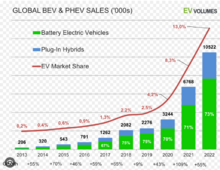
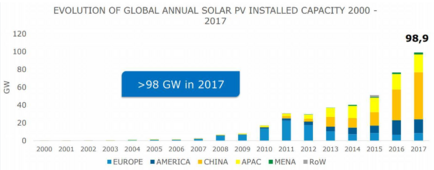
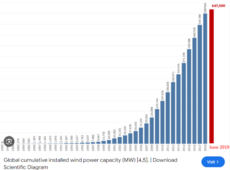
Last edited:
Bob B
Emperor Of Solar
- Joined
- Sep 21, 2019
- Messages
- 9,165
Must have already forgot.aenyc, not sure this is the right forum for talking cheap
even the newest member is finding out the cost real fast.
I'm sure some on here can even justify the cost of a Rolex watch, just for keeping time.
View attachment 216180
with the problem we face
View attachment 216181
View attachment 216182
looking for cheap fixes almost seems off topic, a diversion, or an excuse to do nothing.(could work on britebart, but not here)
yet millions are making the investment in our future right now, how they justify it is on them.
View attachment 216183
View attachment 216184
View attachment 216185

TommySr
Solar Enthusiast
bob, while I'm prone to forgetfulness, I also see who is making the most investments in our future.Must have already forgot.
but there is some logic to that, we are in the millions, they are in the billions.
but the bottom line is we are all working on it.
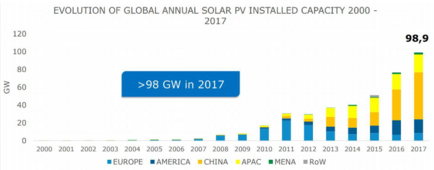
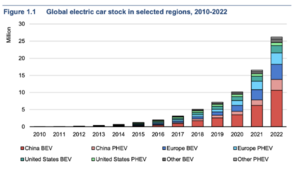
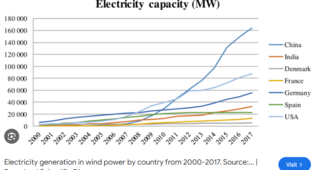
while it's possible the members here that think it's all a scam could be right, a lot of people around
the world have drank the cool aid.

Last edited:
svetz
Works in theory! Practice? That's something else
Earth's magnetic field protects the Earth from cosmic rays and charged particles. It's happen numerous times in the past and there's nothing in the geological record to show any warming from it. There's lot's of evidence around that. Not that they're harmless to life-forms.In this article, they are talking about the escalating rate of decay of the earth's magnetic field ..... You know, the only thing that is keeping radiation from the sun from frying us ....... 5% a decade now ..... That's a LOT. It was previously thought to be 5% a century.
Of course there is "no evidence" it has anything to do with the climate.
See:
- Earth's shifting poles don't cause climate change - the conspiracy theory debunked
- Why Variations in Earth's Magnetic Field don't impact weather or climate
- Does the Earth's Magnetic Field Influence Climate?
- A magnetic field reversal 42,000 years ago may have contributed to mass extinctions
- What's the link between cosmic rays and climate change?
RussNM
Solar Enthusiast
42OhmsPA
What's in a title?
Similar threads
- Replies
- 169
- Views
- 5K
- Replies
- 10
- Views
- 563
- Replies
- 13
- Views
- 691
- Replies
- 5
- Views
- 674






